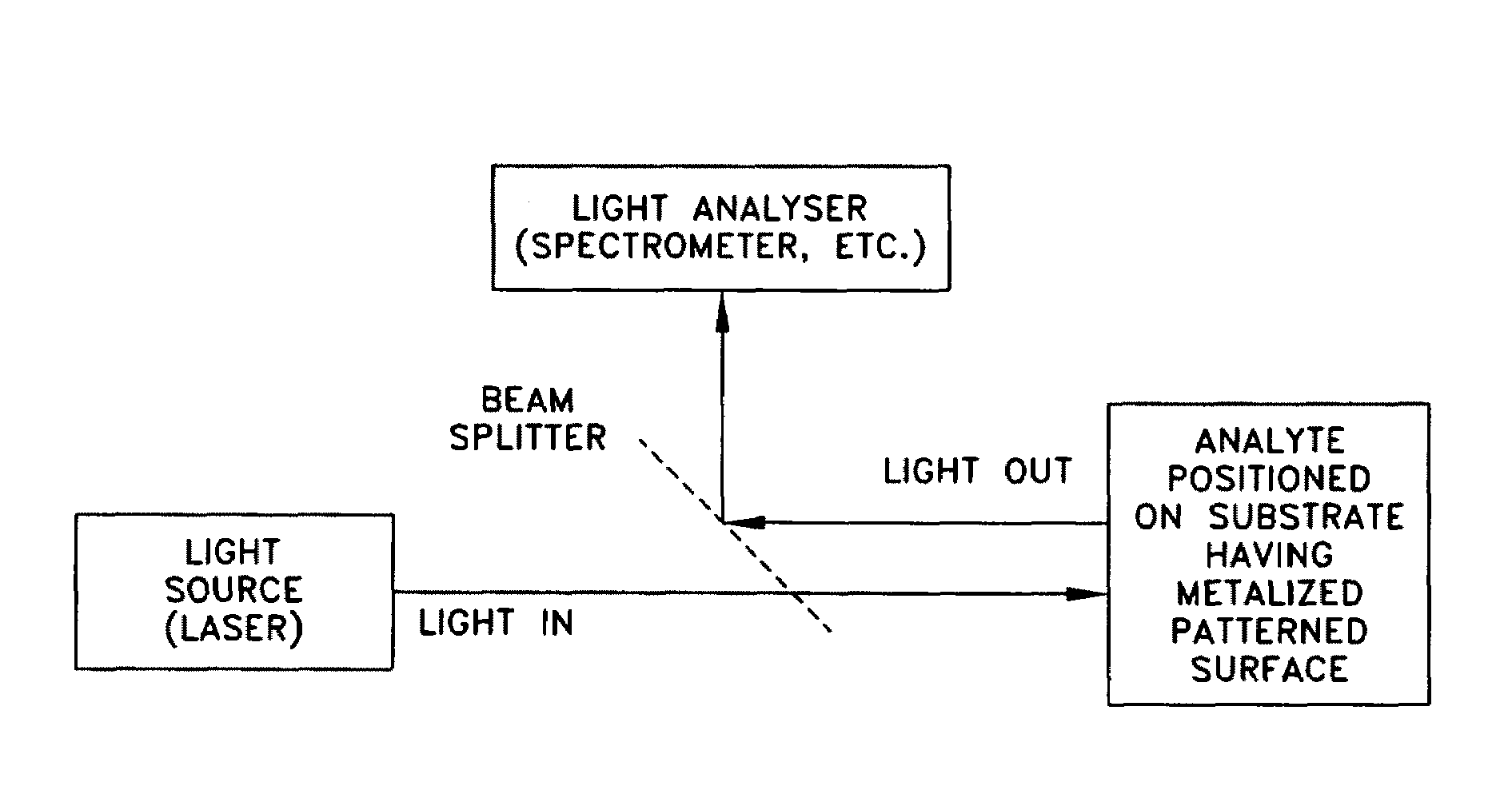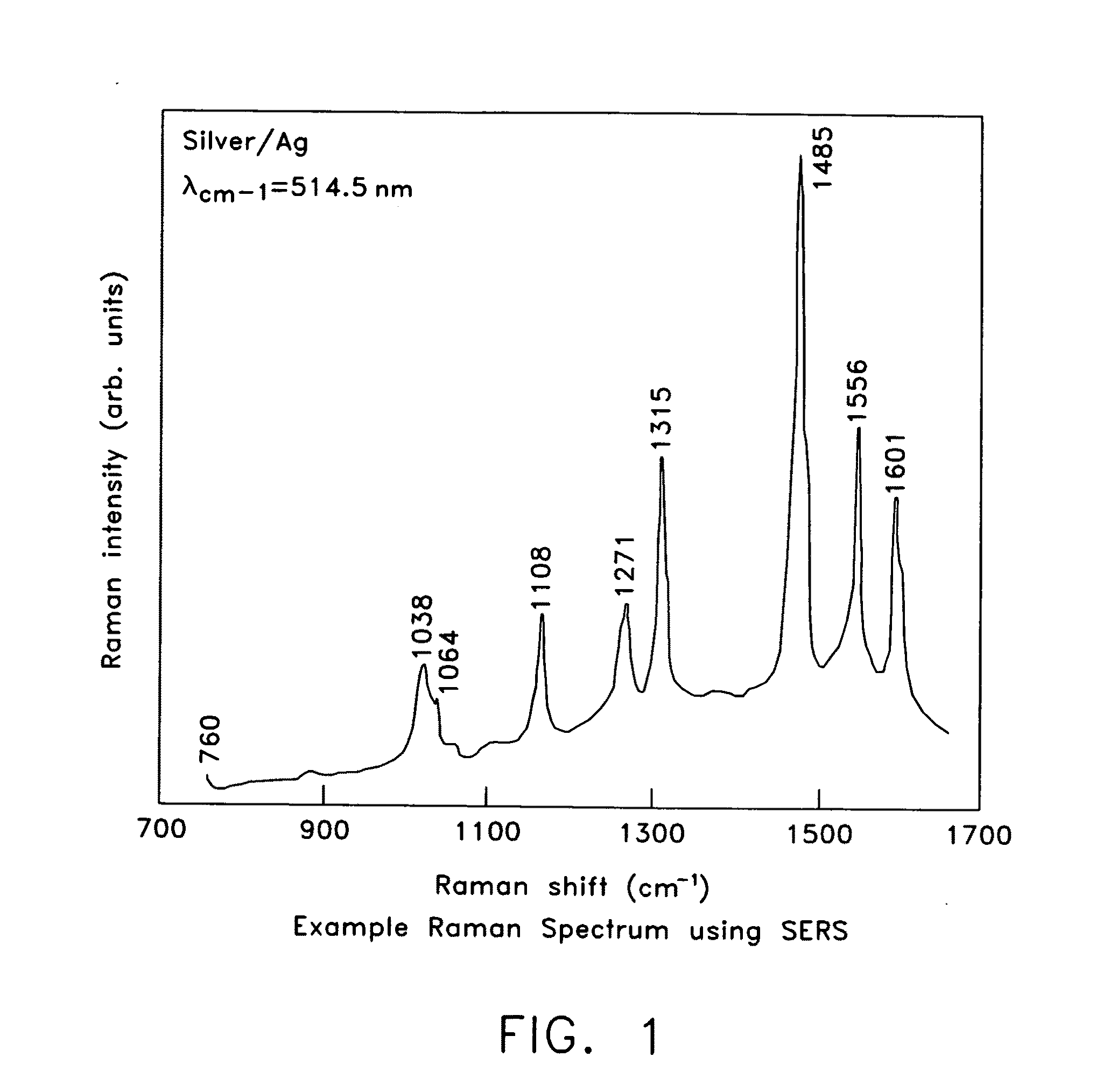Applications of laser-processed substrate for molecular diagnostics
a technology of molecular diagnostics and laser processing, which is applied in the field of molecular diagnostics using laser processing substrates, can solve the problems of not being as sensitive or specific as is desired, adding noise, and limited utility of many current genomic assays, and achieves the effect of facilitating sers analysis of analytes
- Summary
- Abstract
- Description
- Claims
- Application Information
AI Technical Summary
Problems solved by technology
Method used
Image
Examples
Embodiment Construction
[0063]A novel substrate that meets all of the criteria discussed above for effecting surface enhancement of an analyte for SERS analyses is formed by a novel semiconductor or metal structure which includes nanopatterned surfaces fabricated by laser processing using femtosecond lasers, and which thereafter has the nanopatterned surfaces metalized so as to form the complete substrate. The femtosecond laser irradiation of the semiconductor or metal structure (e.g., silicon) in the appropriate environment can produce a variety of interesting nanostructures which can, after metalization, provide the desired optical effect.
[0064]One such structure is called black silicon, as micron-scale spikes formed on the surface of the silicon change the reflectivity of the silicon so its absorptance is significantly increased in the visible, and well into the infrared, spectrum.
[0065]Another structure has nanoscale bumps or spikes when the base material is covered with water or another liquid, during...
PUM
 Login to View More
Login to View More Abstract
Description
Claims
Application Information
 Login to View More
Login to View More - R&D
- Intellectual Property
- Life Sciences
- Materials
- Tech Scout
- Unparalleled Data Quality
- Higher Quality Content
- 60% Fewer Hallucinations
Browse by: Latest US Patents, China's latest patents, Technical Efficacy Thesaurus, Application Domain, Technology Topic, Popular Technical Reports.
© 2025 PatSnap. All rights reserved.Legal|Privacy policy|Modern Slavery Act Transparency Statement|Sitemap|About US| Contact US: help@patsnap.com



